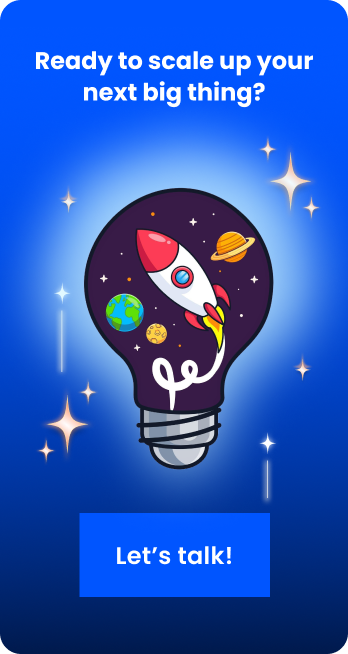
Data Mining vs Business Intelligence: Detailed Comparison
Tarsem Singh | December 17, 2023 , 10 min read
Table Of Content
Big data heavily influence our world. Everything from the ads we see, what we buy, the news we follow, and even what we are likely to search on Google is determined by big data analytics.
Consumers are now used to personalized marketing and expect to regularly see new features and products that specifically appeal to them. Companies must constantly monitor customer behavior and preferences to grab attention for their marketing messages and products.
But how do top companies accurately predict what customers want? The key lies in combining data mining and business intelligence (BI). While some people may use BI and data mining interchangeably, their meanings differ.
Key Takeaways
- Data mining uncovers hidden patterns and trends from large datasets to drive strategic decisions.
- Business Intelligence (BI) transforms raw data into actionable insights for informed decision-making.
- Data mining predicts future trends, while BI focuses on analysing current and historical business data.
- Combining data mining with BI enables businesses to anticipate demand and optimise operations.
- BI relies on data visualisation and reporting tools; data mining uses machine learning and statistical models.
- Together, data mining and BI empower organisations to make smarter, data-driven decisions.
Definitions
At first glance, the terms “data mining” and “business intelligence” might seem interchangeable, but beneath the surface lies some differences. Let’s start by defining them.
What is Data Mining
Data mining is uncovering hidden patterns, correlations, and trends within vast datasets. It is sifting through mountains of information to reveal valuable insights. Imagine it as a keen investigator, examining raw data to unearth gems that can shape strategic decisions.
Data mining employs clustering, classification, regression, and association rule mining techniques. These methods enable organisations to transform raw data into actionable intelligence, providing a competitive edge in a data-driven world.
One of the most crucial aspects of Data Mining is a process called ETL to meet specific business needs, like predicting business outcomes, making reports and dashboards, improving operations, and more. ETL stands for Extract, Transform, and Load—a way of gathering and storing data from different sources in a data warehouse.
ETL processes simplify data preparation for analytics, enabling the extraction of valuable insights, such as predicting demand for online stores and understanding consumer behavior through integrating CRM and social media feedback.
What is Business Intelligence
On the other hand, business intelligence involves gathering, analyzing, and presenting business information to facilitate informed decision-making. If data mining is the investigator, business intelligence is the storyteller, translating complex data into narratives that guide executives in steering their organizations toward success.
BI encompasses various activities, including data warehousing, querying, reporting, and dashboards. It serves as a compass, directing businesses toward opportunities and helping them navigate challenges with strategic insights.
Data Mining vs Business Intelligence: A Detailed Comparison
Now that we’ve introduced our protagonists, let’s compare to see what sets them apart.
1. Purpose and Focus:
- Data Mining: Focuses on identifying patterns and trends within data, often to predict future outcomes.
- Business Intelligence: Concentrates on providing historical, current, and predictive views of business operations to support decision-making.
2. Time Orientation:
- Data Mining: Primarily forward-looking, aiming to predict future trends based on historical data.
- Business Intelligence: Emphasises historical and current perspectives, aiding in understanding past performance and current status.
3. Techniques Employed:
- Data Mining: Use advanced statistical techniques, machine learning algorithms, and mathematical models.
- Business Intelligence: Leverages reporting tools, queries, and data visualisation for a comprehensive understanding of business performance.
Take a glance at the table below to better understand the key differences:
| Feature | Data Mining | Business Intelligence |
|---|---|---|
| Focus | Uncovering patterns, trends, and insights from raw data. | Analyzing and presenting actionable business information. |
| Purpose | Extracting hidden knowledge for decision-making. | Facilitating strategic and tactical business decisions. |
| Process | Automated discovery through algorithms and models. | Aggregating, querying, and reporting on structured data. |
| Tools | Utilizes machine learning algorithms and statistical models. | Relies on reporting tools, dashboards, and OLAP for analysis. |
| Time Orientation | Often applied to historical or large datasets. | Real-time and historical data analysis for current insights. |
When Should You Use Data Mining vs Business Intelligence?
Understanding the practical applications of data mining and business intelligence is paramount for appreciating their impact on organisational dynamics.
Data Mining in Action
One of the primary applications of data mining is predictive analytics. By examining historical data, organizations can forecast future trends, customer behaviors, and market shifts. For instance, in the retail sector, data mining can unveil patterns in customer purchasing habits, enabling businesses to optimize inventory and personalize marketing strategies.
Fraud detection is another area where data mining is used. Financial institutions deploy sophisticated algorithms to detect abnormal patterns that may signify fraudulent activities. This safeguards the institution’s interests and enhances the overall security of financial transactions.
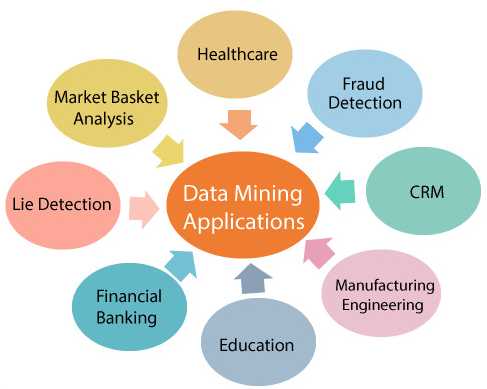
Image Source: https://www.javatpoint.com/data-mining
In Business Intelligence
Business intelligence, focusing on presenting actionable insights, plays a role in strategic decision-making. Imagine a company assessing the performance of a marketing campaign. BI tools can comprehensively overview the campaign’s impact, analyzing customer engagement, conversion rates, and return on investment metrics.
In supply chain management, BI tools can offer real-time visibility into the movement of goods, inventory levels, and production efficiency. This empowers organizations to make agile decisions, optimize processes, and respond promptly to market demands.
The Synergy Between Data Mining and Business Intelligence
While data mining and business intelligence have distinct roles, their synergy creates a powerful force for organizational growth. The insights uncovered by data mining serve as the raw material for business intelligence. Data-mined predictions and patterns become the foundation for informed decision-making within the BI framework.
Consider a scenario where data mining predicts a surge in demand for a specific product. Business intelligence tools can translate this prediction into actionable insights, guiding production planning, marketing strategies, and resource allocation.
Let’s explore this relationship through the story of ABC Inc.
ABC Inc., a forward-thinking tech company, uses data mining to understand consumers’ behavior. Algorithms carefully analyze customer interactions, online searches, and buying habits. These algorithms spot a new trend—a growing demand for their main product, Sphere.
The predictive ability of data mining guides ABC. The information gathered gives a detailed understanding of what customers like helping the company foresee changes in the market before they happen. They discovered insights through data mining.
Now, let’s focus on the crucial role of Business Intelligence at ABC. With insights from data mining, BI tools get to work. Dashboards show the upcoming surge in demand for Sphere. These easy-to-understand insights serve as a plan for smart decision-making.
In the boardroom, ABC’s leaders use BI reports to coordinate a response. Production ramps up to meet the expected demand, making sure supply chains are in sync. Marketing strategies adjust to capitalize on the growing consumer interest, tailoring campaigns to match identified preferences. Resource allocation becomes a strategic dance guided by insights from data mining.
ABC Inc.’s story highlights the collaboration between data mining and BI. The predictive power of data mining blends with BI’s strategic thinking, creating a successful partnership.
Conclusion
In summary, as we conclude our exploration of “Data Mining vs Business Intelligence,” Data Mining and Business Intelligence (BI) are two different but complementary ways of using data for insights and decision-making. Data Mining focuses on finding hidden patterns in large datasets, while BI uses data to support organizational decision-making.
Even though they have different goals and methods, both are important for organizations to gain insights, improve operations, and make informed decisions. The choice between the two depends on specific needs, data complexity, expertise, and business goals. Ultimately, making the most of data is crucial for success in today’s data-driven world.
If you are at a crossroads and are wondering if you need these in your business, the following questions will help you understand better.
- Do you understand the key performance indicators (KPIs) critical to your business, and are you actively monitoring and visualizing them?
- Have you identified specific challenges or areas within your business that require improvement or optimization?
- Is your data currently structured and segmented into distinct tables, facilitating seamless analysis and interpretation?
- Do you have a strategy for transforming raw data into actionable insights to drive business decisions?
These questions are guides, helping you decide how to handle your data. We’re here for you if you need clarification on the answers or need help with these decisions.For specific advice that fits your business, reach out to us. Our team of experts is ready to work with you on creating a data-focused plan that matches your goals perfectly. Don’t let uncertainty slow you down—make your business stronger with smart choices.
Frequently Asked Questions
Q: How is Data Mining different from Data Analysis?
While data analysis encompasses a broader range of activities, data mining focuses on discovering hidden patterns and trends within data to make predictions or identify relationships.
Q: How does Business Intelligence contribute to strategic decision-making?
BI provides historical, current, and predictive views of business operations, helping organizations understand their performance, identify opportunities, and make strategic decisions.
Q: Can the outputs of Data Mining be used in Business Intelligence?
Certainly! Absolutely! The information we get from digging into data, like making predictions and spotting patterns, can easily fit into the bigger picture of Business Intelligence. This blending makes decision-making even better.
Q: How does Business Intelligence differ from Data Science?
Business Intelligence presents actionable insights from existing data to facilitate decision-making. On the other hand, data science involves a broader scope, including developing algorithms and models to extract insights from data.
Related Blogs
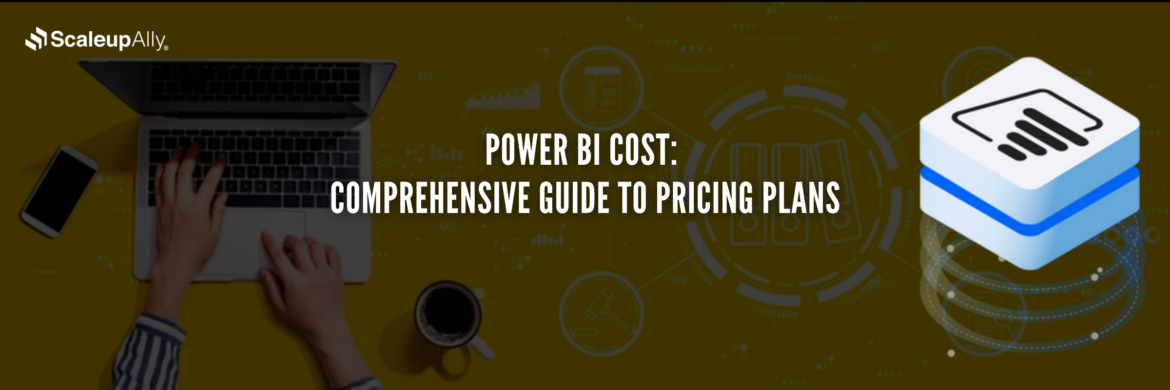
Power BI Cost: Comprehensive Guide to Pricing Plans
Compare different types of Power BI Licenses and their costs: Free, Pro, and Premium options explained. Discover which Power BI plan suits your business needs.
Tarsem Singh
Jun 30 ,
12 min read
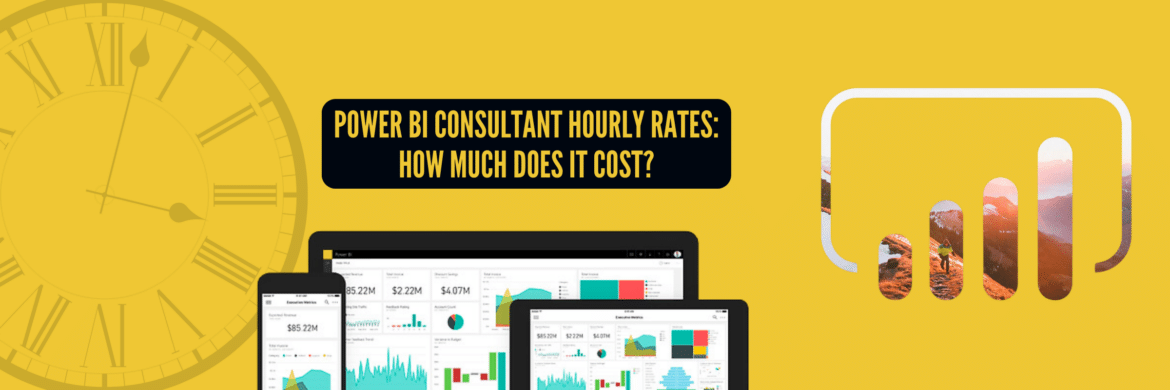
Power BI Consultant Hourly Rates: How Much Does It Cost?
Struggling to understand the cost of hiring a Power BI consultant? Find out the Power BI consultant hourly rates, what factors influence the price and how to find the best value for your business.
Pranay Agrawal
Jun 30 ,
15 min read
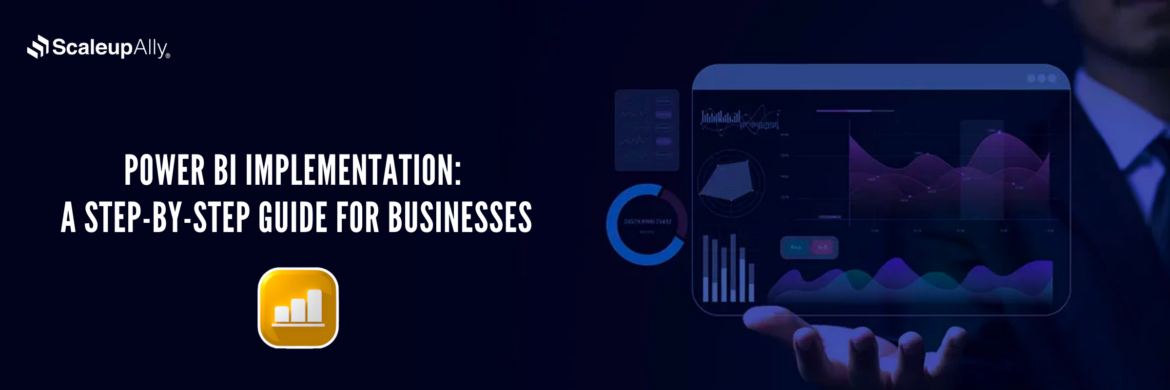
Power BI Implementation: A Step-by-Step Guide for Businesses
Discover how to implement Power BI in your organization with this comprehensive guide. Learn essential steps and best practices for successful implementation.
Tarsem Singh
Jun 30 ,
12 min read


